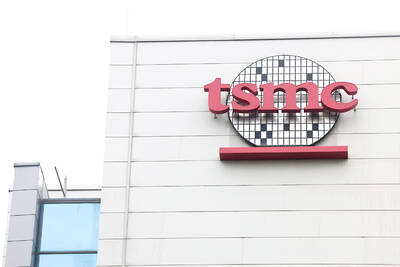Global sales of electronic paper displays are expected to grow 64 percent per unit in compound annual growth rate (CAGR) during the upcoming 10-year period, riding on fast uptake of end products such as online bookstore operator Amazon.com Inc’s Kindle electronic readers, research house DisplaySearch said in its latest report.
Electronic paper displays are mostly used in electronic books and electronic shelf labels. Applications will rapidly expand to electronic textbooks, newspapers, magazines, mobile phones, point-of-purchase and public signage displays.
In 2018, shipments of electronic paper displays could reach as much as 1.8 billion units, compared with 22 million units forecast for this year, the Austin, Texas-based market researcher said in a report on Thursday.
By revenue, the market is expected to grow by 41 percent in CAGR to US$9.6 billion in 2018, from this year’s US$431 million, DisplaySearch said.
“E-paper displays are taking off with consumers due to their low power consumption and ease of reading, especially in sunlight,” said Jennifer Colegrove, director of display technologies at DisplaySearch.
“In addition, e-paper displays are ‘green’ because they reduce paper consumption and electronic shelf labels can save time and labor costs by enabling dynamic pricing in stores,” she said.
Electronic reader displays account for the majority of electronic paper revenues. Nearly all electronic reader devices in the market today use E Ink’s electrophoretic display technology, DisplaySearch said in the report.
In June, Taiwan’s Prime View International Co Ltd (元太科技), which supplies electronic paper displays to Amazon and Sony Corp, said it intended to acquire E Ink for US$215 million, including all the firm’s key technologies and patents on electronic paper displays. Prime View is scheduled to wrap up the acquisition by the end of this year, it said.
AU Optronics Corp (友達光電), Taiwan’s No. 1 liquid-crystal-display (LCD) panel maker, said it expected to make its first delivery of 6-inch and 9-inch electronic paper display in the fourth quarter of this year through its subsidiary SiPix Imaging Inc.
SiPix is shipping electronic paper displays used in electronic tags from the second quarter, AU Optronics said.
To cope with growing demand, SiPix said it would expand capacity by 50 percent to 30,000 units a month.
Chi Mei Optoelectronics Corp (奇美電子), the nation’s No. 2 flat-panel maker, however, said it had no plan to follow suit, adding it intended to focus on its core LCD panel business.

When an apartment comes up for rent in Germany’s big cities, hundreds of prospective tenants often queue down the street to view it, but the acute shortage of affordable housing is getting scant attention ahead of today’s snap general election. “Housing is one of the main problems for people, but nobody talks about it, nobody takes it seriously,” said Andreas Ibel, president of Build Europe, an association representing housing developers. Migration and the sluggish economy top the list of voters’ concerns, but analysts say housing policy fails to break through as returns on investment take time to register, making the

EARLY TALKS: Measures under consideration include convincing allies to match US curbs, further restricting exports of AI chips or GPUs, and blocking Chinese investments US President Donald Trump’s administration is sketching out tougher versions of US semiconductor curbs and pressuring key allies to escalate their restrictions on China’s chip industry, an early indication the new US president plans to expand efforts that began under former US president Joe Biden to limit Beijing’s technological prowess. Trump officials recently met with their Japanese and Dutch counterparts about restricting Tokyo Electron Ltd and ASML Holding NV engineers from maintaining semiconductor gear in China, people familiar with the matter said. The aim, which was also a priority for Biden, is to see key allies match China curbs the US

NOT TO WORRY: Some people are concerned funds might continue moving out of the country, but the central bank said financial account outflows are not unusual in Taiwan Taiwan’s outbound investments hit a new high last year due to investments made by contract chipmaker Taiwan Semiconductor Manufacturing Co (TSMC, 台積電) and other major manufacturers to boost global expansion, the central bank said on Thursday. The net increase in outbound investments last year reached a record US$21.05 billion, while the net increase in outbound investments by Taiwanese residents reached a record US$31.98 billion, central bank data showed. Chen Fei-wen (陳斐紋), deputy director of the central bank’s Department of Economic Research, said the increase was largely due to TSMC’s efforts to expand production in the US and Japan. Investments by Vanguard International

STRUGGLING TO SURVIVE: The group is proposing a consortium of investors, with Tesla as the largest backer, and possibly a minority investment by Hon Hai Precision Nissan Motor Co shares jumped after the Financial Times reported that a high-level Japanese group has drawn up plans to seek investment from Elon Musk’s Tesla Inc to aid the struggling automaker. The group believes the electric vehicle (EV) maker is interested in acquiring Nissan’s plants in the US, the newspaper reported, citing people it did not identify. The proposal envisions a consortium of investors, with Tesla as the largest backer, but also includes the possibility of a minority investment by Hon Hai Precision Industry Co (鴻海精密) to prevent a full takeover by the Apple supplier, the report said. The group is